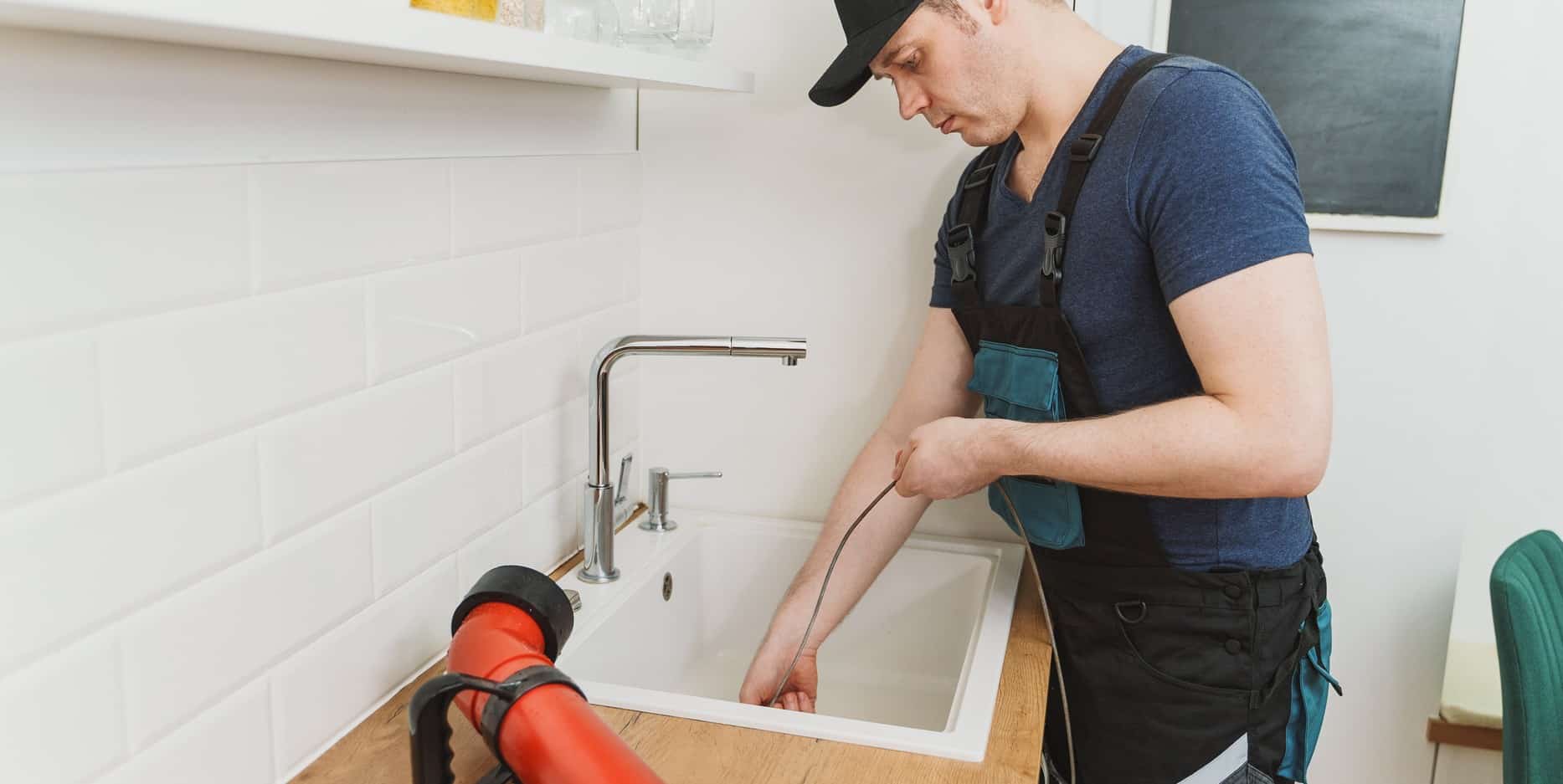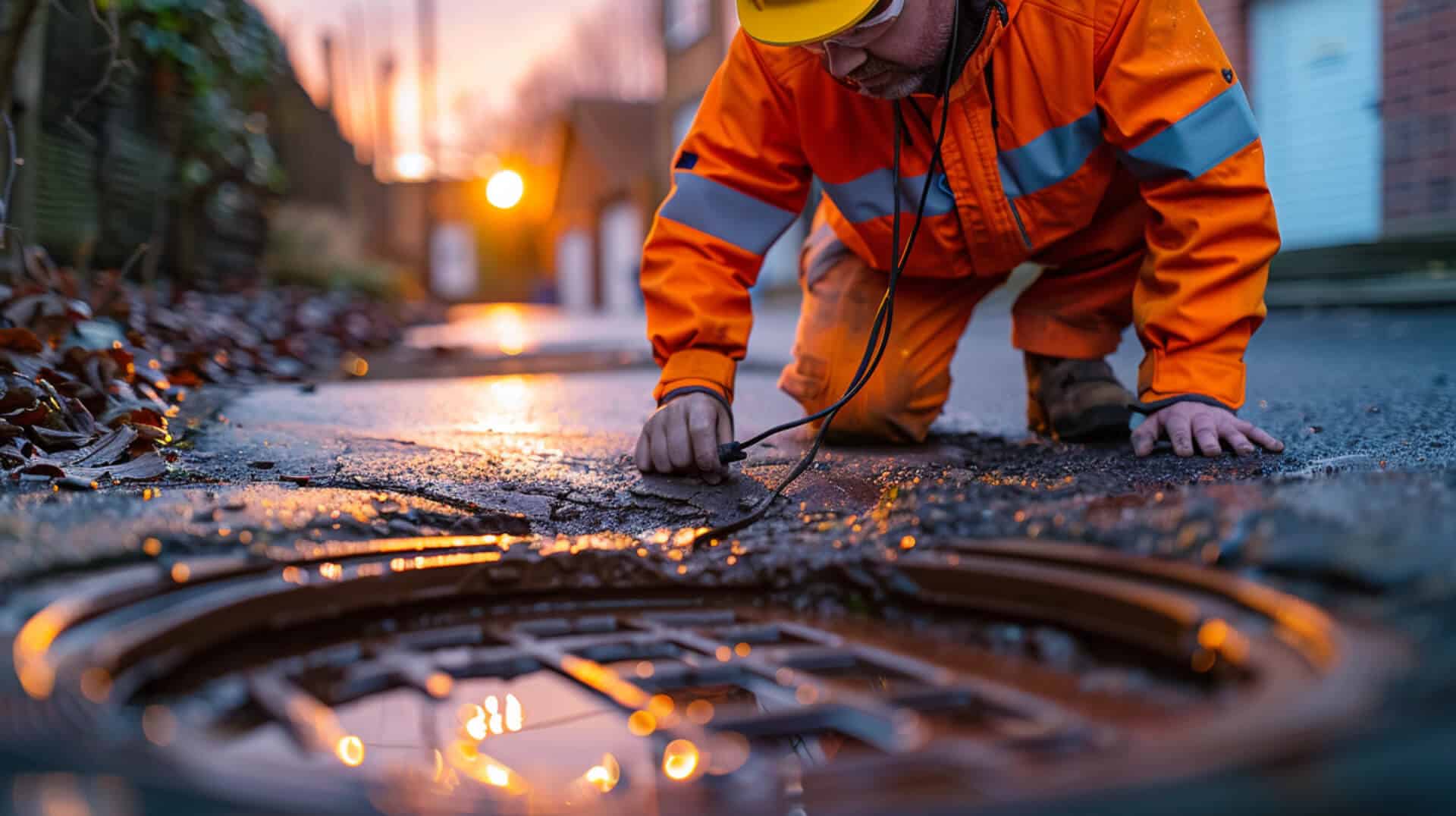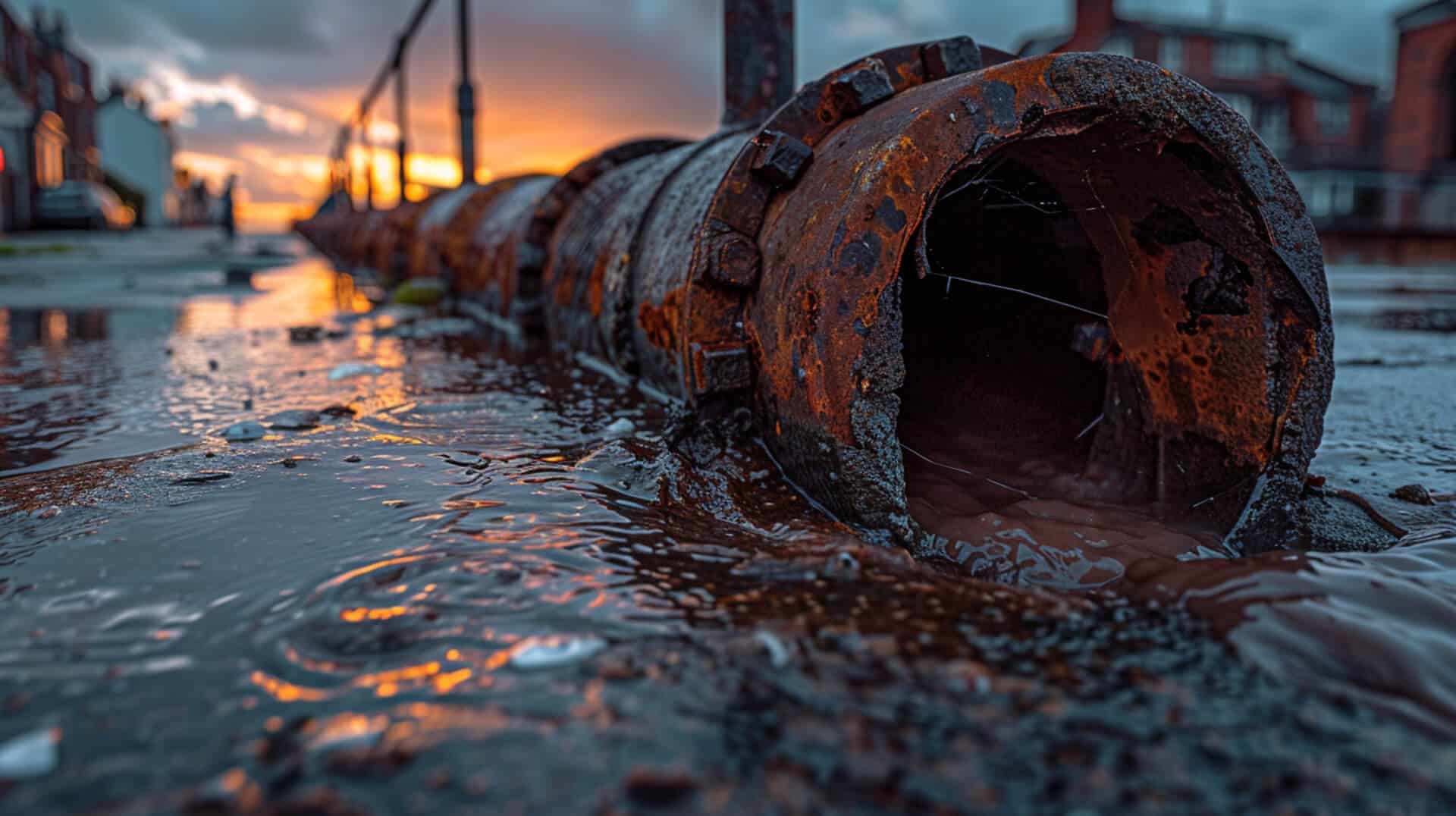 Does Laundry Detergent Build-up Cause Drain Blockages?
Does Laundry Detergent Build-up Cause Drain Blockages?
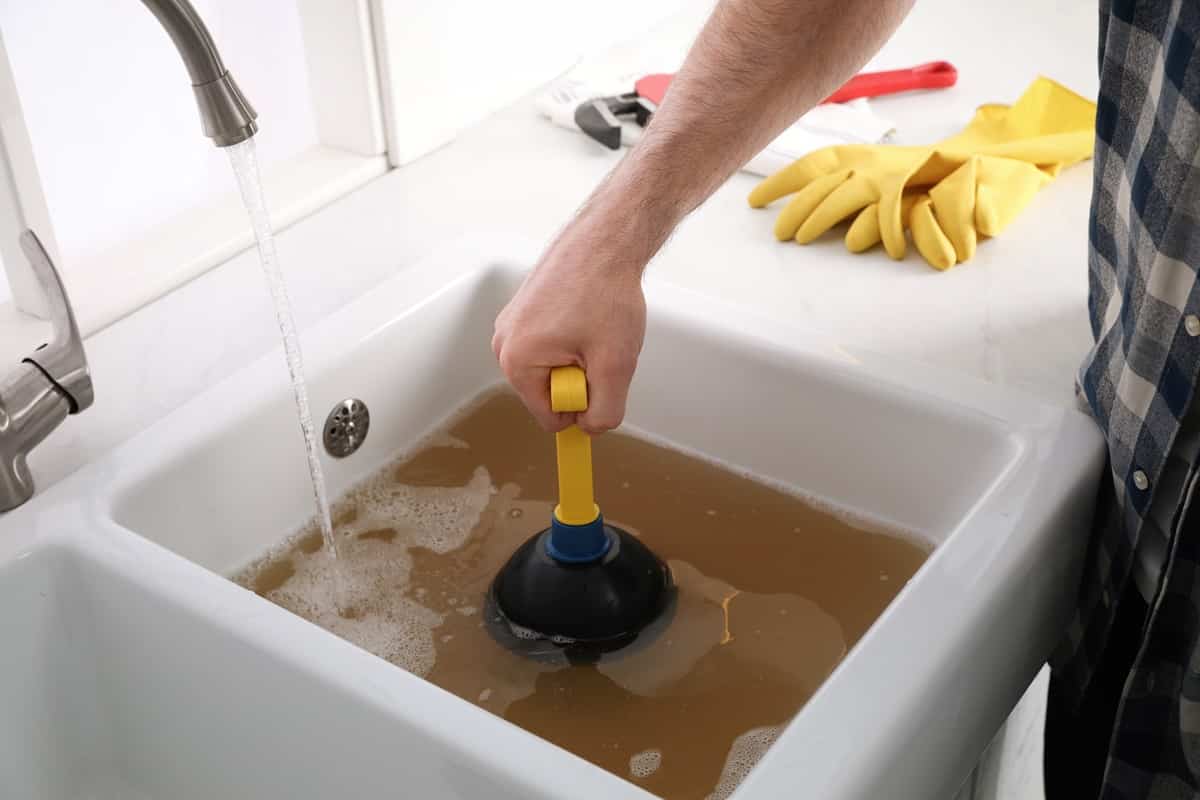
What Causes Blocked Drains Due to Laundry Detergent Build-up?
Blocked drains due to laundry detergent build-up are a common issue faced by many households and facilities. Understanding the nature of this problem and its causes is essential for effective prevention and management.
What is Laundry Detergent Build-up and How Does it Occur?
Laundry detergent build-up refers to the accumulation of detergent residues within the drainage system. This build-up typically occurs when detergent, especially in excess, does not fully dissolve or rinse away during the washing process. Over time, these residues can combine with other materials such as lint, hair, and soap scum, leading to blockages.
Why is it Important to Address This Issue?
Addressing laundry detergent build-up is crucial for several reasons:
- Preventing Blockages: Build-up can lead to significant blockages, causing water to back up and potentially damage plumbing systems.
- Maintaining Efficiency: Blocked drains reduce the efficiency of washing machines and other appliances, leading to higher energy and water consumption.
- Avoiding Costs: Regular maintenance and prompt action can prevent costly repairs and replacements.
Who is Most Affected by Laundry Detergent Build-up in Drains?
Laundry detergent build-up can affect a wide range of users, including:
- Homeowners: Regular household laundry can lead to detergent build-up, especially with frequent use of washing machines.
- Business Owners: Businesses such as laundromats and hotels, which handle large volumes of laundry, are particularly susceptible to this issue.
- Facility Managers: Facilities with extensive laundry operations, such as hospitals and care homes, need to be vigilant about maintaining clear drains.
What Will This Guide Cover?
This guide will provide comprehensive information on:
- Signs of Laundry Detergent Build-up: Identifying symptoms and early warning signs.
- Mechanisms of Build-up: Understanding how detergent residues accumulate.
- Types of Detergents: Impact of different detergents on drain health.
- Preventive Measures: Steps to prevent build-up.
- DIY Solutions: Methods for clearing minor blockages.
- Professional Services: When and why to seek professional help.
- Long-term Effects: Consequences of ignoring detergent build-up.
- Environmental Considerations: Impact of detergents on the environment.
- Technical Terms: Key concepts related to drain maintenance.
- Practical Examples: Real-life challenges and solutions.
By addressing these topics, the guide aims to equip readers with the knowledge and tools needed to manage and prevent laundry detergent build-up in drains effectively.
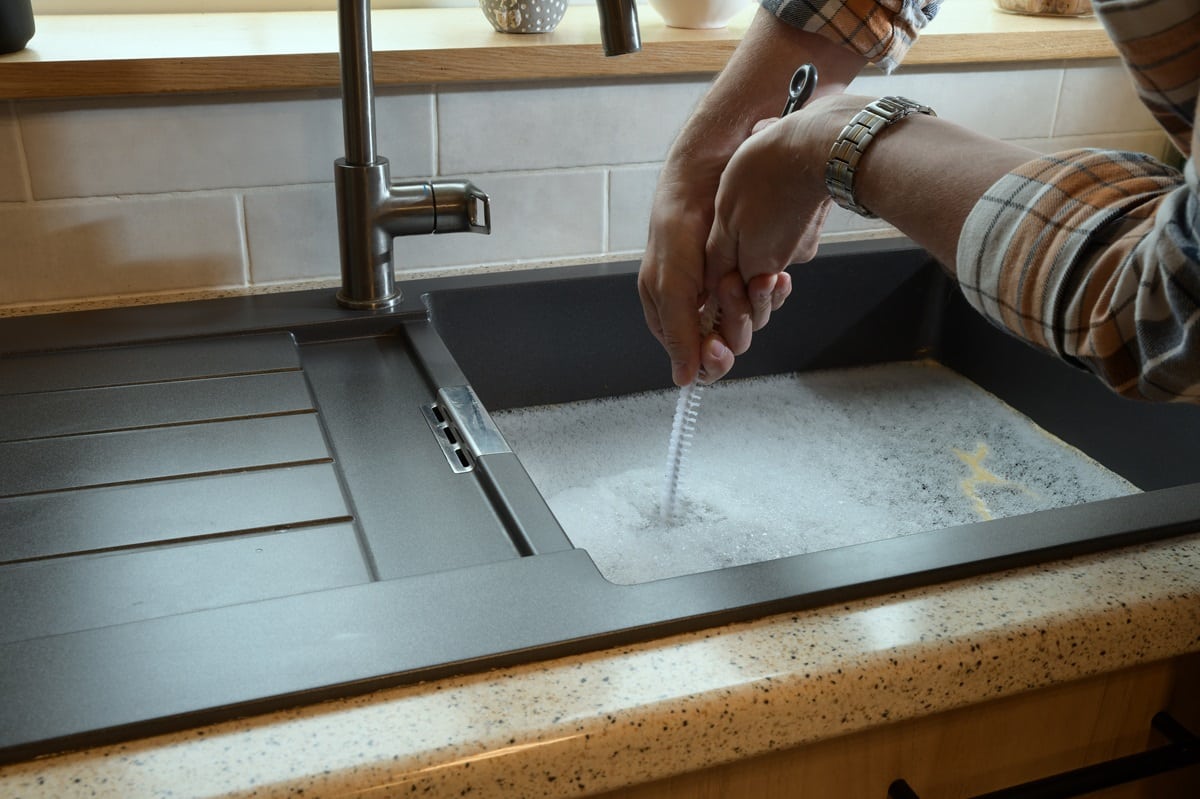
Signs of Laundry Detergent Build-up in Drains
Laundry detergent build-up in drains can lead to various issues that, if left unaddressed, may cause significant plumbing problems. Recognising the signs early can help mitigate these issues.
Common Indicators of Detergent Build-up
- Overflowing Water: One of the most noticeable signs is water overflowing from the drain. This occurs when the detergent residue restricts water flow, causing it to back up.
- Strange Noises: Gurgling or bubbling sounds from the drain can indicate a partial blockage caused by detergent build-up.
- Foul Smells: A persistent, unpleasant odour emanating from the drain is often a result of detergent residue trapping organic matter, leading to bacterial growth.
- Slow Draining Water: Water that drains slowly from sinks, bathtubs, or washing machines suggests that detergent build-up is impeding the flow.
Identifying Early Signs of Blockages
- Visual Inspection: Regularly check the drain for visible soap scum or residue.
- Water Flow Test: Pour water down the drain and observe the speed at which it flows. Slow drainage can be an early indicator.
- Odour Detection: Pay attention to any unusual smells coming from the drain, as this can be an early sign of build-up.
Consequences of Ignoring These Signs
- Complete Blockage: Ignoring early signs can lead to a complete blockage, requiring more extensive and costly repairs.
- Pipe Damage: Persistent build-up can cause corrosion or damage to the pipes, leading to leaks or bursts.
- Increased Repair Costs: Delaying maintenance can result in higher repair costs due to the need for professional intervention and potential pipe replacement.
Differentiating from Other Types of Blockages
- Material Composition: Detergent build-up is typically characterised by a soapy, sticky residue, whereas other blockages may involve hair, grease, or foreign objects.
- Location: Detergent build-up is more common in laundry drains, while other blockages may occur in kitchen or bathroom drains.
- Odour: The smell from detergent build-up is often distinct due to the combination of soap and trapped organic matter, differing from the odours caused by food waste or sewage.
By understanding these signs and taking early action, you can prevent more severe plumbing issues and maintain a healthy drainage system.
Mechanisms of Laundry Detergent Build-up
Laundry detergent build-up in pipes can lead to significant plumbing issues. Understanding the mechanisms behind this accumulation is crucial for effective prevention and maintenance.
How Detergent Residue Accumulates in Pipes
Detergent residue accumulates in pipes primarily due to the following factors:
- Incomplete Dissolution: Detergents, especially powders, may not dissolve completely in water, leading to residue that sticks to the pipe walls.
- Soap Scum Formation: When detergent mixes with minerals in hard water, it forms soap scum, which adheres to the pipes.
- Frequent Use: Regular use of washing machines and dishwashers without proper maintenance can lead to gradual build-up over time.
Role of Other Materials in Build-up
Other materials can exacerbate detergent build-up by providing additional surfaces for residue to cling to:
- Hair: Hair strands can trap detergent particles, creating larger blockages.
- Lint: Lint from clothing can combine with detergent residue, forming clumps that obstruct water flow.
- Coins and Small Objects: Items left in pockets can get lodged in pipes, catching detergent residue and other debris.
Impact of Different Types of Detergents
The type of detergent used can significantly influence the likelihood of build-up:
- Powder Detergents: More prone to incomplete dissolution, leading to higher residue accumulation.
- Liquid Detergents: Generally dissolve more completely but can still contribute to build-up if overused.
- High Efficiency (HE) Detergents: Designed for low-water washing machines, they produce less suds and are less likely to cause build-up.
- Enzyme-based Cleaners: These can help break down organic matter, reducing the risk of blockages.
Chemical Interactions Involved
Several chemical interactions contribute to detergent build-up:
- Hard Water Minerals: Calcium and magnesium in hard water react with detergents to form insoluble soap scum.
- pH Levels: The pH of the water can affect the solubility of detergents, influencing residue formation.
- Organic Matter: Detergents can bind with organic matter, such as food particles, creating larger, more stubborn blockages.
By understanding these mechanisms, you can take proactive steps to prevent detergent build-up and maintain a healthy plumbing system.
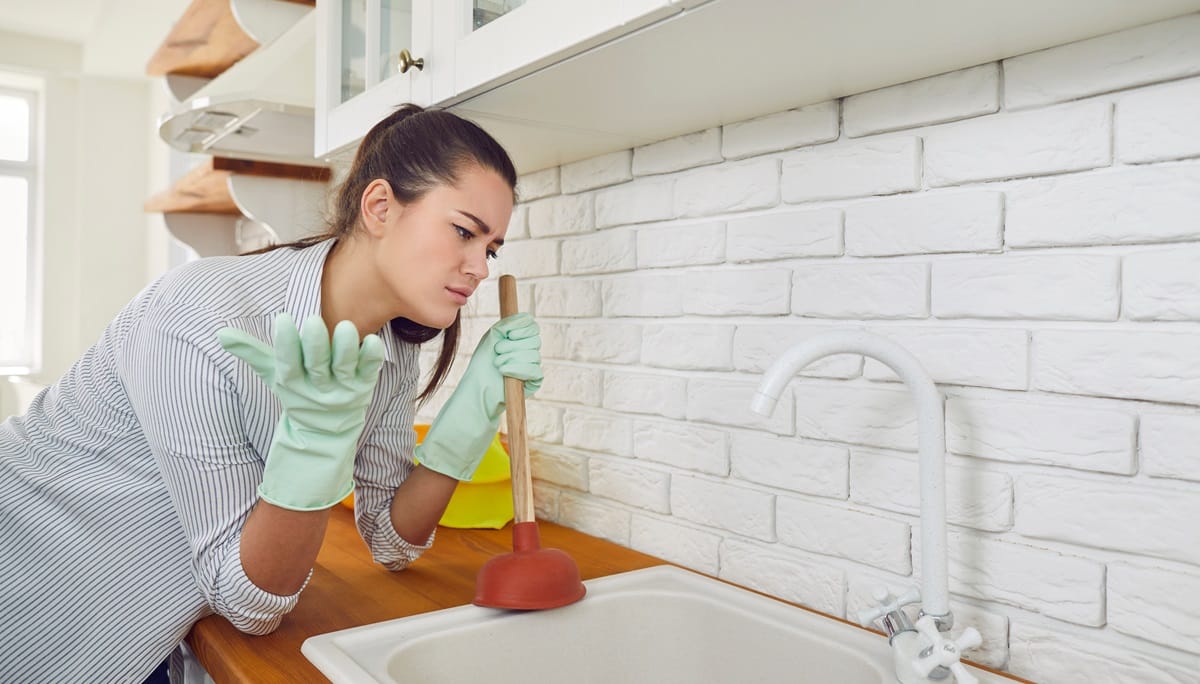
Types of Detergents and Their Impact on Drains
Understanding the differences between various types of detergents and their impact on drains is essential for maintaining a healthy plumbing system.
Differences Between Powder and Liquid Detergents
- Powder Detergents: These are more likely to leave residue in pipes due to incomplete dissolution, especially in cold water. The undissolved particles can accumulate and contribute to blockages.
- Liquid Detergents: Generally dissolve more completely in water, reducing the likelihood of residue build-up. However, overuse can still lead to soap scum formation.
Impact of High-Efficiency (HE) Detergents on Drain Health
- Low-Suds Formula: HE detergents are designed for high-efficiency washing machines that use less water. They produce fewer suds, which helps prevent soap scum and residue build-up in drains.
- Concentrated Formulas: These detergents are more concentrated, requiring smaller amounts per wash, which can reduce the risk of excess detergent residue.
Benefits of Enzyme-Based and Biodegradable Detergents
- Enzyme-Based Detergents: Contain enzymes that break down organic matter, such as food particles and grease, making them effective at preventing build-up in drains.
- Biodegradable Detergents: These are formulated to break down more easily in the environment, reducing the risk of long-term residue accumulation in pipes and minimising environmental impact.
Environmental Impacts of Various Detergents
- Phosphates: Common in many detergents, phosphates can contribute to water pollution by promoting algae growth in water bodies, leading to eutrophication.
- Zeolites: Used as a phosphate alternative, zeolites can increase sludge in wastewater treatment plants but do not cause eutrophication.
- Eco-Friendly Options: Choosing detergents with eco-friendly ingredients can help reduce the environmental footprint and prevent harmful chemicals from entering the water supply.
By selecting the appropriate type of detergent and using it correctly, you can minimise the risk of drain blockages and contribute to a healthier environment.
Preventive Measures to Avoid Detergent Build-up
Preventing detergent build-up in drains requires regular maintenance and proper usage of detergents. Implementing these measures can help maintain a healthy plumbing system.
Regular Maintenance Routines
- Check Pockets: Ensure that pockets are empty before washing clothes to prevent small objects from entering the drain.
- Clean Detergent Drawers: Regularly clean the detergent drawers in washing machines to remove any residue.
- Use Liquid Detergents: Opt for liquid detergents as they dissolve more completely and reduce the risk of residue build-up.
- Occasional Vinegar Wash: Run an empty wash cycle with vinegar to help break down any detergent residue in the pipes.
Proper Detergent Usage
- Correct Amount: Use the recommended amount of detergent as specified by the manufacturer to avoid excess residue.
- Avoid Mixing Products: Do not mix different cleaning products, as this can lead to chemical reactions that contribute to build-up.
- High-Efficiency Detergents: Use high-efficiency (HE) detergents in HE washing machines to minimise suds and residue.
Additional Tools
- Lint Traps: Instal lint traps on washing machine discharge hoses to catch lint and prevent it from entering the drain.
- Mesh Bags: Use mesh bags for small items like socks and underwear to prevent them from getting stuck in the drain.
Frequency of Preventive Measures
- Weekly: Clean detergent drawers and check pockets before each wash.
- Monthly: Run a vinegar wash cycle to break down any accumulated residue.
- Quarterly: Inspect and clean lint traps and mesh bags to ensure they are functioning properly.
By following these preventive measures, you can significantly reduce the risk of detergent build-up and maintain a clear and efficient drainage system.
DIY Solutions for Clearing Detergent Build-up
Addressing detergent build-up in drains can often be managed with simple do-it-yourself (DIY) methods. These solutions can help clear minor blockages and maintain a healthy drainage system.
Effective DIY Methods for Clearing Blockages
- Remove Visible Debris: Start by removing any visible debris from the drain opening. This can include hair, lint, or other small objects that may be contributing to the blockage.
- Use a Plunger: A plunger can be effective for dislodging minor blockages. Ensure a tight seal around the drain and use firm, consistent pressure to create suction and dislodge the build-up.
- Drain Cleaning Tools: Tools such as drain snakes or augers can reach deeper into the pipes to remove blockages. These tools are particularly useful for more stubborn clogs.
Safely Using Baking Soda and Vinegar
Baking soda and vinegar are common household items that can be used to clear detergent build-up:
- Pour Baking Soda: Pour half a cup of baking soda down the drain.
- Add Vinegar: Follow with half a cup of vinegar. The mixture will fizz and help break down the residue.
- Wait and Flush: Allow the mixture to sit for 15-30 minutes, then flush the drain with hot water to clear the loosened debris.
Recommended Commercial Products for DIY Use
Several commercial products are designed to clear detergent build-up:
- Enzyme-Based Cleaners: These cleaners use natural enzymes to break down organic matter and detergent residue. They are safe for regular use and environmentally friendly.
- Chemical Drain Cleaners: While effective, these should be used sparingly as they can be harsh on pipes and the environment. Follow the manufacturer’s instructions carefully.
Appropriate Use of Boiling Water and Enzyme-Based Cleaners
- Boiling Water: Pouring boiling water down the drain can help dissolve detergent residue. This method is particularly effective for grease and soap scum build-up.
- Enzyme-Based Cleaners: Use these cleaners regularly to maintain clear drains. They are safe for pipes and help prevent future build-up.
By employing these DIY methods, you can effectively manage and prevent detergent build-up in your drains, ensuring a smooth and efficient plumbing system.
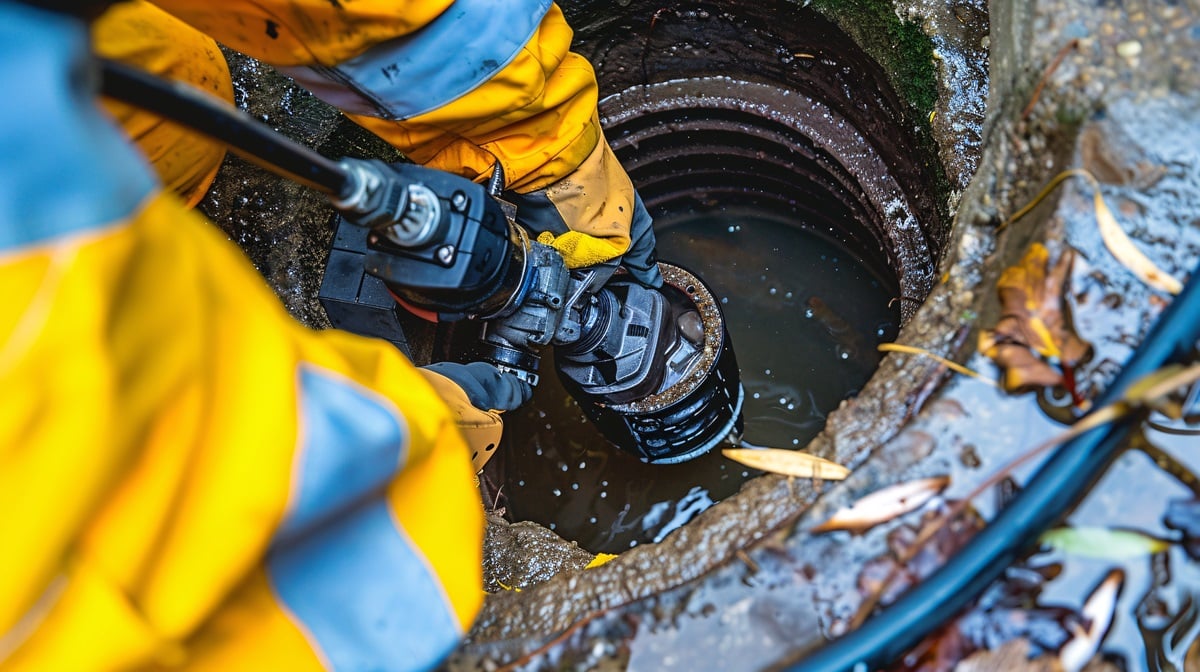
Professional Services for Persistent Blockages
Persistent blockages caused by laundry detergent build-up may require professional intervention. Understanding when to call a professional and the services they offer can help address the issue effectively.
When to Call a Professional Plumber
- Repeated Blockages: If DIY methods fail to clear the blockage or if blockages recur frequently, it is advisable to seek professional help.
- Severe Blockages: When water flow is significantly restricted or completely blocked, professional services are necessary.
- Unpleasant Odours: Persistent foul smells from the drain may indicate a deeper issue that requires professional inspection.
Services Offered by Professionals for Detergent Build-up
- Drain Inspection: Professionals use advanced tools to inspect the drain and identify the exact location and cause of the blockage.
- Hydro Jetting: This method uses high-pressure water jets to clear stubborn detergent build-up and other debris from the pipes.
- Video Camera Work: A video camera inspection allows professionals to visually assess the condition of the pipes and identify any damage or severe blockages.
- Full Drain Repairs: If the blockage has caused damage to the pipes, professionals can perform necessary repairs to restore proper function.
How Professional Tools Work
- Hydro Jetting: This technique involves inserting a hose with a specialised nozzle into the drain. High-pressure water is then released, effectively breaking down and flushing out the build-up.
- Mechanical Drain Auger: Also known as a drain snake, this tool is used to manually break up and remove blockages. It is particularly effective for hard-to-reach areas.
Costs Associated with Professional Services
- Inspection Fees: Initial inspection fees can vary based on the complexity of the blockage and the tools required.
- Service Charges: The cost of services such as hydro jetting or drain repairs depends on the severity of the blockage and the extent of the work needed.
- Repair Costs: If pipe repairs are necessary, additional costs will be incurred based on the materials and labour required.
By understanding the professional services available and their associated costs, you can make informed decisions about addressing persistent blockages caused by laundry detergent build-up.
Long-term Effects of Ignoring Detergent Build-up
Persistent detergent build-up in drains can lead to significant long-term issues. Understanding these effects is crucial for maintaining a healthy plumbing system and avoiding costly repairs.
Damage to Pipes
- Corrosion: Detergent residue can cause chemical reactions that lead to pipe corrosion, weakening the structural integrity of the plumbing system.
- Blockages: Continuous build-up can result in severe blockages, restricting water flow and increasing pressure within the pipes, which may cause leaks or bursts.
Impact on the Overall Plumbing System
- Reduced Efficiency: Blocked pipes reduce the efficiency of the entire plumbing system, leading to slower drainage and potential backflow issues.
- Increased Maintenance Needs: Persistent build-up necessitates more frequent maintenance and cleaning to prevent complete blockages and system failures.
Financial Implications of Severe Blockages
- Repair Costs: Addressing severe blockages often requires professional intervention, which can be costly. This includes fees for inspection, hydro jetting, and potential pipe repairs.
- Increased Water Bills: Inefficient plumbing systems can lead to higher water usage and increased utility bills.
Impact on Property Value
- Decreased Property Value: Persistent plumbing issues can negatively affect property value. Potential buyers may be deterred by the prospect of ongoing maintenance and repair costs.
- Inspection Failures: Properties with unresolved plumbing issues may fail inspections, complicating the sale process and reducing marketability.
By addressing detergent build-up promptly and maintaining a regular cleaning schedule, you can prevent these long-term effects and ensure the longevity and efficiency of your plumbing system.
Environmental Considerations of Detergent Use
The use of detergents in laundry can have significant environmental impacts, particularly on wastewater treatment and aquatic ecosystems. Understanding these impacts and choosing eco-friendly options can help mitigate negative effects.
Impact on Wastewater Treatment
Detergents can affect wastewater treatment processes in several ways:
- Chemical Load: Detergents add a chemical load to wastewater, which treatment plants must remove to prevent environmental contamination.
- Sludge Production: Certain detergent ingredients, such as zeolites, can increase sludge production in wastewater treatment plants, complicating disposal and treatment processes.
Benefits of Using Eco-Friendly Detergents
Eco-friendly detergents offer several advantages:
- Biodegradability: These detergents break down more easily in the environment, reducing the risk of long-term pollution.
- Reduced Toxicity: Eco-friendly detergents typically contain fewer harmful chemicals, making them safer for aquatic life and reducing the risk of water pollution.
- Lower Environmental Footprint: Using eco-friendly detergents can help decrease the overall environmental impact of laundry activities.
Impact of Phosphates and Zeolites
- Phosphates: Phosphates are effective cleaning agents but can cause eutrophication in water bodies, leading to excessive algae growth and oxygen depletion, which harms aquatic life.
- Zeolites: Used as a phosphate alternative, zeolites do not cause eutrophication but can increase sludge in wastewater treatment plants, posing disposal challenges.
Regulations Regarding Detergent Ingredients
Regulations aim to minimise the environmental impact of detergents:
- Phosphate Bans: Many regions have implemented bans or restrictions on phosphates in detergents to prevent water pollution and protect aquatic ecosystems.
- Ingredient Disclosure: Regulations often require manufacturers to disclose detergent ingredients, allowing consumers to make informed choices about the products they use.
- Eco-Labelling: Certifications and eco-labels help identify environmentally friendly detergents, guiding consumers towards more sustainable options.
By understanding the environmental considerations of detergent use, you can make informed choices that benefit both your plumbing system and the environment.
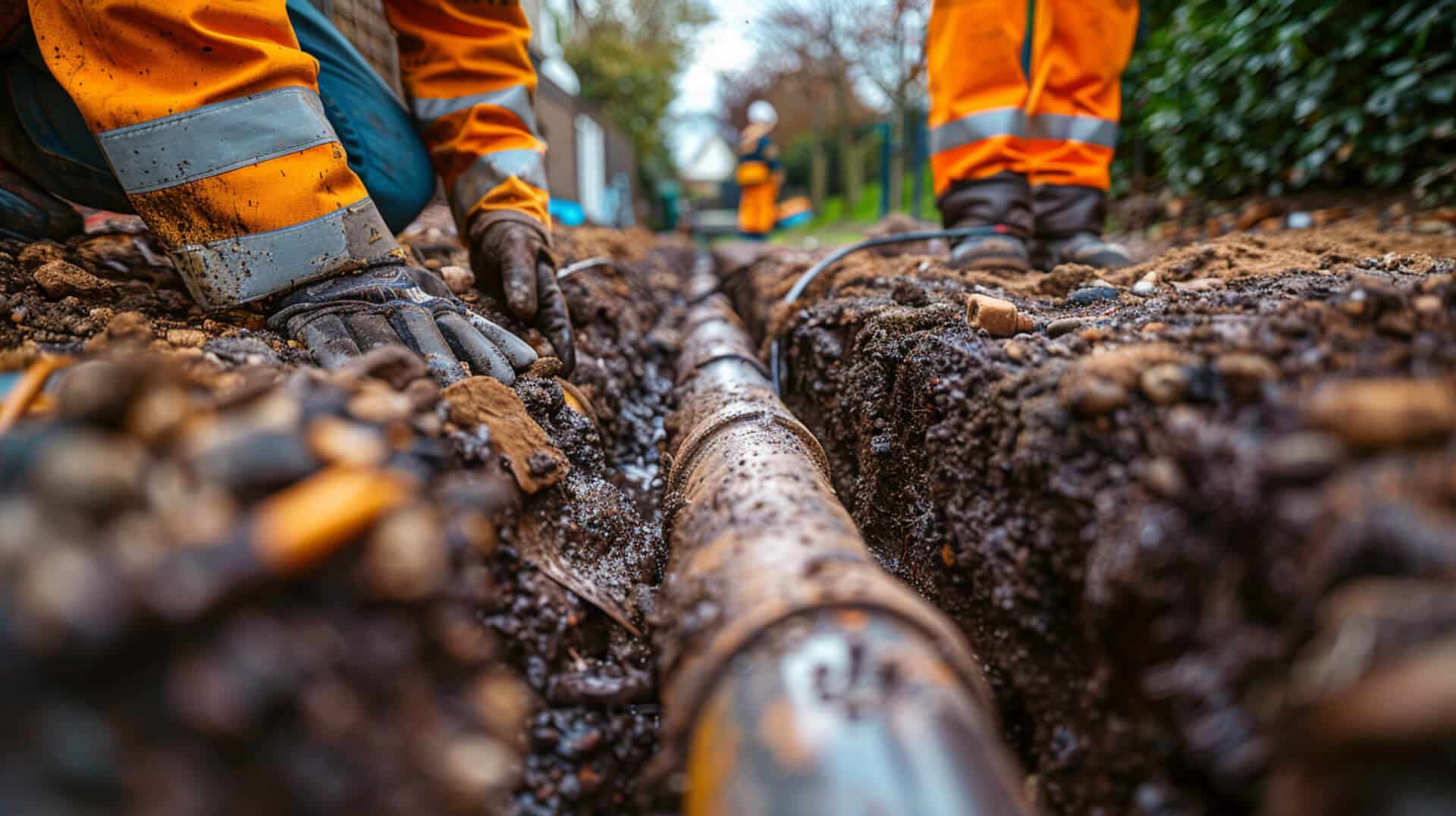
Technical Terms and Concepts Related to Drain Maintenance
Understanding the technical terms and concepts related to drain maintenance can help in effectively addressing and preventing blockages caused by laundry detergent build-up.
Mechanical Drain Auger
A mechanical drain auger, also known as a drain snake, is a tool used to clear blockages in pipes. It consists of a long, flexible metal cable with a corkscrew-like end that can be manually or mechanically rotated to break up and remove clogs.
- Usage: Insert the auger into the drain and rotate it to catch and dislodge the blockage. It is particularly effective for hard-to-reach areas and stubborn clogs.
Hydro Jetting
Hydro jetting is a method that uses high-pressure water jets to clear blockages and clean the inside of pipes.
- How It Works: A hose with a specialised nozzle is inserted into the drain. High-pressure water is then released, effectively breaking down and flushing out debris, including detergent build-up, grease, and other residues.
P-traps, S-traps, and U-bends
These are types of plumbing traps designed to prevent sewer gases from entering buildings while allowing waste to pass through.
- P-trap: Shaped like the letter “P,” it is commonly used in sinks and drains.
- S-trap: Shaped like the letter “S,” it is less common due to its tendency to syphon water out of the trap.
- U-bend: Shaped like the letter “U,” it is used in various plumbing applications to maintain a water seal.
Backflow Preventers and Cleanout Plugs
- Backflow Preventers: Devices installed in plumbing systems to prevent contaminated water from flowing back into the clean water supply. They are essential for maintaining water quality and safety.
- Cleanout Plugs: Access points in the plumbing system that allow for easy cleaning and removal of blockages. They are typically located at strategic points along the drain line.
By familiarising yourself with these technical terms and concepts, you can better understand the tools and methods used in drain maintenance and effectively address issues related to detergent build-up.
Practical Examples and Challenges in Managing Detergent Build-up
Managing detergent build-up in drains presents several challenges for property managers, businesses, and facility managers. Understanding these challenges and implementing effective maintenance routines can help mitigate issues.
Common Challenges Faced by Property Managers
- Frequent Blockages: Regular detergent build-up can lead to frequent blockages, disrupting daily operations and requiring constant maintenance.
- Identifying the Source: Determining the exact cause of blockages can be difficult, especially in large facilities with multiple drainage systems.
- Maintenance Costs: Regular maintenance and professional services can be costly, impacting the budget for other essential services.
Implementing Effective Maintenance Routines
Businesses can adopt several strategies to manage and prevent detergent build-up:
- Regular Inspections: Schedule routine inspections to identify early signs of build-up and address them promptly.
- Proper Detergent Use: Educate staff on the correct use of detergents, including the appropriate amounts and types to use.
- Maintenance Logs: Keep detailed logs of maintenance activities to track the frequency and severity of blockages, helping to identify patterns and areas needing attention.
Real-World Examples of Successful Blockage Management
- Case Study: Hotel Chain: A hotel chain implemented a maintenance routine that included monthly inspections and the use of enzyme-based cleaners. This approach significantly reduced the frequency of blockages and maintenance costs.
- Case Study: Commercial Laundry Facility: A commercial laundry facility switched to high-efficiency (HE) detergents and installed lint traps on all washing machines. These measures effectively minimised detergent build-up and improved overall drainage efficiency.
Educating Staff on Proper Detergent Use
Facility managers can take the following steps to ensure staff are knowledgeable about proper detergent use:
- Training Sessions: Conduct regular training sessions to educate staff on the correct use of detergents and the importance of preventing build-up.
- Instructional Materials: Provide clear, easy-to-understand instructional materials, such as posters and handouts, that outline best practices for detergent use.
- Regular Updates: Keep staff informed about any changes in maintenance routines or detergent products to ensure compliance with the latest guidelines.
By addressing these challenges and implementing effective maintenance routines, property managers, businesses, and facility managers can successfully manage and prevent detergent build-up in their drainage systems.
Ensuring Clear Drains and Effective Maintenance
Maintaining clear drains and preventing detergent build-up requires a combination of regular maintenance and professional intervention when necessary. This guide provides essential information to help property owners, business owners, and facility managers manage their drainage systems effectively.
Key Takeaways from This Guide
- Understanding Detergent Build-up: Recognise how detergent residue accumulates in pipes and the impact of different types of detergents.
- Identifying Signs: Be aware of common indicators of detergent build-up, such as slow draining water, strange noises, and foul smells.
- Preventive Measures: Implement regular maintenance routines, use the correct amount of detergent, and consider eco-friendly options to minimise build-up.
How Regular Maintenance Prevents Future Issues
- Routine Inspections: Conduct regular inspections to identify early signs of build-up and address them promptly.
- Proper Detergent Use: Educate staff on the correct use of detergents, including the appropriate amounts and types to use.
- Cleaning Protocols: Establish cleaning protocols that include the use of enzyme-based cleaners and occasional vinegar washes to break down residue.
Why Professional Help Is Sometimes Necessary
- Persistent Blockages: When DIY methods fail to clear blockages or if blockages recur frequently, professional intervention is required.
- Advanced Tools: Professionals use advanced tools such as hydro jetting and video camera inspections to effectively clear and diagnose blockages.
- Comprehensive Repairs: If build-up has caused damage to pipes, professionals can perform necessary repairs to restore proper function.
Next Steps for Property Owners, Business Owners, and Facility Managers
- Implement Maintenance Plans: Develop and implement a comprehensive maintenance plan that includes regular inspections and cleaning routines.
- Educate Staff: Provide training and resources to staff on proper detergent use and maintenance practices.
- Schedule Professional Inspections: Arrange for periodic professional inspections to ensure the drainage system remains in good condition and to address any issues promptly.
By following these guidelines, you can ensure clear drains and effective maintenance, preventing detergent build-up and maintaining a healthy plumbing system.
